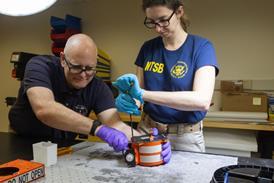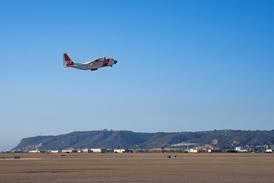Six European NATO members are gearing up to sign an agreement later this year to advance the alliance’s plans to field a next-generation medium-lift helicopter by the mid-2030s.
Initial activity on the Next Generation Rotorcraft Capability (NGRC) project began in November 2020 with the signature of a letter of intent between France, Germany, Greece, Italy, and the UK to explore the potential of a future multi-national helicopter programme.
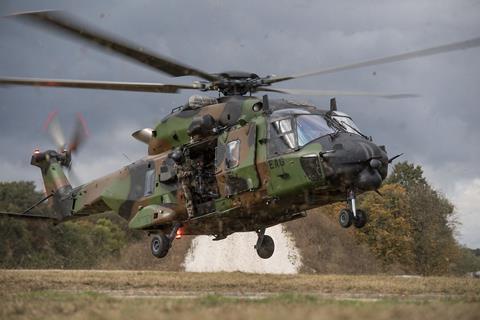
These countries were later joined by the Netherlands, Spain and the USA as observers, with only Amsterdam joining the initial five nations to move the effort forward, says Cyril Heckel, NGRC project manager at the NATO Support and Procurement Agency (NSPA).
The six nations are “currently assessing” a memorandum of understanding for signature around mid-year which will allow work to begin on the NGRC’s concept stage, he told Defence IQ’s International Military Helicopter conference on 15 February.
Once that milestone is passed, the NSPA will issue requests for proposals allowing industry to bid for work on six to eight studies that will underpin the design of the eventual rotorcraft.
Heckel outlines several possible areas for evaluation: the “impact of speed” – draft requirements call for an aircraft that can cruise at between 180-220kt (333-407km/h) – on maintenance and mission capability; modularity; and the potential for electric or hybrid power in the future.
These studies could then be combined “to create some sort of preliminary design review”, he says, and would “present preferred design solutions”.
Heckel says the concept phase would run until 2025, leading to development and production of an aircraft that would that would achieve initial operating capability clearance by 2035.
The NSPA sees potential for three aircraft development and production batches: tranche one helicopters would be built until 2043; development of tranche two aircraft would run from 2035 to 2039, switching to production between 2042 and 2050; while the third tranche would see development and remanufacturing run from 2042-2046, and production from 2051-2059.
“As you can see, activities for concept stage now will have an impact until the end of the century,” he says.
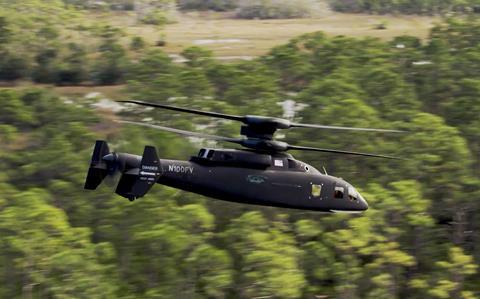
NATO procurement rules mean that the concept stage will be open to contractors from all member states, including the USA, which has for some years been running its own helicopter modernisation process under the Future Vertical Lift (FVL) programme.
Heckel sees input from US companies involved in FVL as vital to inform the NGRC development process. “Maybe they will team up with European industry or share knowledge with European industry,” he says.
However, “development and production is another story”, as “European nations could express a limitation to European industry”, he says, while noting “that is a critical decision that has not been made yet”.
Although six nations are leading the project, Heckel believes additional countries will become involved over time. “Maybe after the concept stage we will have more nations – and with different [development and production] tranches maybe different countries will join in at a later stage.”
Heckel says the programme management office is keen to avoid the mistakes made on NATO’s most recent helicopter programme, the NH Industries NH90, which became notorious for its complexity amid the development of dozens of different variants.
“We will consider the positive and negative feedback [on the NH90] to implement good procedures in the concept stage of the NGRC,” he says.
Aside from the fast cruise speed, required attributes of the NGRC include capacity for 12-16 troops, range in excess of 900nm (1,650km), maximum take-off weight of 10-17t, and endurance of more than 5h, or up to 8h with additional fuel tanks, according to initial design parameters released last year.
In addition, the fly-away cost should be no more than €35 million ($41.3 million) and the operating cost no greater than €10,000 per flight hour.
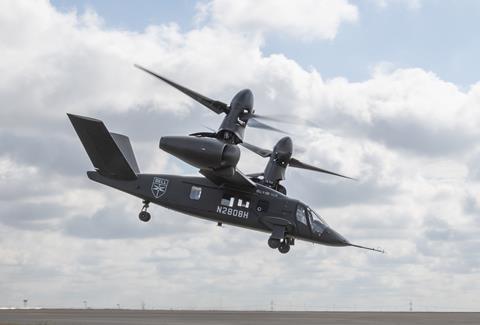
NATO analysis shows there are almost 1,000 helicopters in the 11-15t maximum take-off weight range operated by non-US alliance members which will need replacing by 2050.
However, there is a danger that with the USA pressing ahead with FVL, NATO’s efforts could be superseded by the winners of the ongoing Future Long-Range Assault Aircraft (FLRAA) and Future Attack Reconnaissance Aircraft (FARA) contests.
Indeed, the UK on 14 February signed a pact with the USA relating to the sharing of information on future rotorcraft requirements and programmes, including the potential for co-operative research, development, test and evaluation activities.
Although this does not mean the UK has signed up to FVL, it appears to be a sign of London’s deeper interest in the programme.
Once the winners of FLRAA and FARA are in production, they will be available for export orders through the USA’s Foreign Military Sales framework – which will likely also involve industrial offset.
Speaking during a panel discussion at the conference, Carl Coffman, vice-president of Future Vertical Lift strategy at Bell, said “there is no doubt there will be industrial participation across the board in any international agreement on this”.
“We are not going to do business with a European country without European participation,” he says.
Bell has pitched the V-280 Valor and 360 Invictus as its solutions for FLRAA and FARA, respectively, where they face competition from the Sikorsky-Boeing Defiant X and Sikorsky Raider X.

